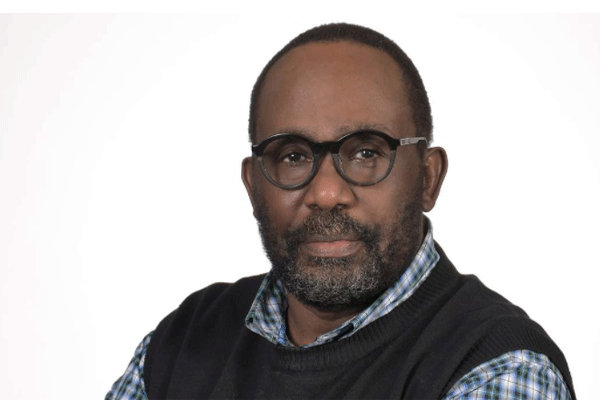Prime
Why Mwenda will cry while Kabushenga is laughing (Part I)

Author, Charles Onyango Obbo. PHOTO/FILE
What you need to know:
- Yes, it is a bit simplistic, but a passable keep-it-simple-and-stupid summary of Ethiopia today.
The Tigray war in Ethiopia rages on, but it seems to have gone into a temporary stalemate after Prime Minister Abiy Ahmed, a former lieutenant colonel and intelligence officer, donned his military uniform and took to the front to lead the federal government troops.
If we take away the personalities and short term politics, going by the positions of our politico-military establishment, Uganda seems to have two positions on the Tigray war. On one hand, it has supported the Tigray People’s Liberation Front (TPLF) that are fighting Addis Ababa, and on the other, it has backed a negotiated settlement that would mostly preserve the status quo.
It is a position that mirrors the great contradiction in the Tigray war. The big history view of the conflict has it that Abiy ultimately brought on the war by seeking to reimpose a unitarian Ethiopia and to destroy its federalist model, which was introduced by the TPLF after it defeated the Mengistu Haile Mariam military junta in 1991.
Of course, there is also the reverse view that the seeds of the war were laid in the ethnic federalism that was instituted by the TPLF.
However, in reality, both the Abiy government and the TPLF want the same thing. Ethiopia, with Egypt, are among the world’s oldest states, the few mentioned in the Bible that are still standing.
Ethiopia, all said and done, is the world’s last empire, with a 3,050-year history through which it has existed in different iterations.
Its present turmoil, many argue, is the crisis of all empires. Eventually they collapse. Abiy, in that sense, is trying to preserve it. But so is the TPLF in striking out beyond its homeland. It’s just that it wants to reconstitute the empire under its dominion.
The Tigray war then is over who will dominate an empire in its terminal stage.
Yes, it is a bit simplistic, but a passable keep-it-simple-and-stupid summary of Ethiopia today. However, it also mirrors the underlying forces defining Ugandan high-level politics, hence the two seemingly contradictory positions we are seeing from President Yoweri Museveni’s palace.
The problem for the Tigray political elite is that it is located in the north, and the River Nile is to the west, and the fertile Great Rift Valley and water-rich agricultural lands are in the central and southern parts of the country. And, unlike 30 years ago, the empire has shrunk, losing Eritrea, and therefore it no longer has no coastline.
These three issues of River Nile, fertile lands, and water in general, are what the fight is over. It is the same fight in Uganda and explains many things, including the Museveni government’s perceived attempt to stage a land grab in Buganda by abolishing mailo, and its northern Uganda policy, embodied by Museveni brother and presidential adviser Lieutenant General Salim Saleh’s 20-year-long camping in, especially, Gulu.
I could see it in 2019 before the Covid pandemic broke out in 2020 when I visited two very good friends; Robert Kabushenga at his Rugyeyo Farm in Wakiso, and journalist/editor Andrew Mwenda in Kanyandahi in Tooro; and then when I travelled on the Lira-Gulu Road.
When you stand in Mwenda’s frontyard in Kanyandahi, you behold beautiful rolling hills, lush green, fed by the largest concentration of crater lakes in the world. When you stand on the balcony of Kabushenga’s cabin at his Rugyeyo farm, you see greenery, mostly trees, hills, but nothing of the water abundance of Kanyandahi.
The drive between Lira and Gulu offers up a verdant landscape, hemmed in by the River Nile to its west, and Lake Kyoga to the south. The lands got a rest during the war and grew fat.
If you look to Uganda in 2100, Kabushenga’s great-great-grandchildren will probably still own Rugyeyo, though it will no longer be farmland. Mwenda’s great-great-grandchildren will likely not own Kanyandahi. They will have long been disrupted out of the place by national security and market forces. The Lira-Gulu road could be what the Kampala-Jinja-to-Busia and Malaba roads are today in economic significance.
The reason for it will be water; the crater lakes, the River Nile and Lake Kyoga; and the fertility of the lands they enable. And in the case of Kanyandahi, the added nearby Albertine oil fields, and a Democratic Republic of Congo that will be the East African Community’s lead economy by then.
The thinking of the Museveni palace, intuitively, but also from a felt strategic sense, is to take a pro-TPLF position because it affirms the right of those on the “outside” to access productive resources within national borders if they are based in areas outside their home base. And backing negotiation with Addis Ababa justifies the centrist organising state logic that establishes a national elite’s dominion over those resources.
So next week we return to Kanyandahi, Rugyeyo, and travel the Lira-Gulu road, to connect the dots.
Mr Onyango-Obbo is a journalist,
writer and curator of the “Wall of Great Africans”. Twitter@cobbo3



